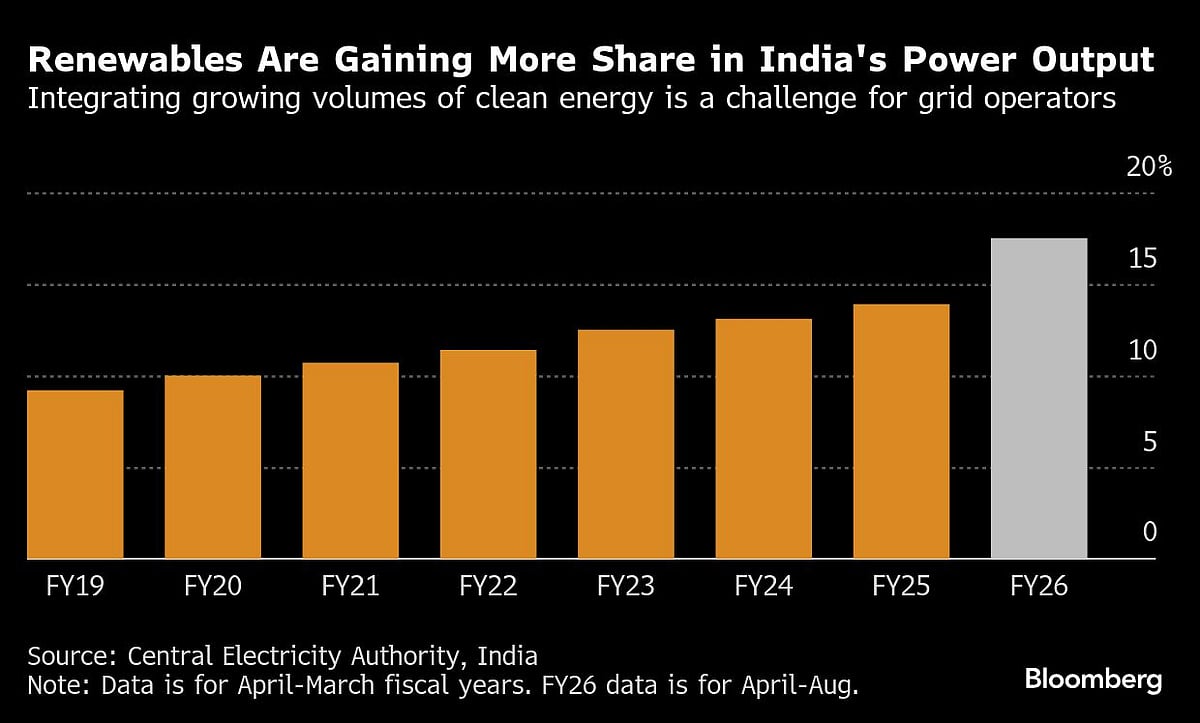India To Tighten Green Power Rules To Safeguard Grid Stability
The Central Electricity Regulatory Commission is considering further changes to how the gap between scheduled and actual power generation is calculated.

India plans to tighten rules on renewable energy to protect its grid stability, requiring solar and wind power producers to stick more closely to their supply schedules or face penalties and loss of revenue.
The Central Electricity Regulatory Commission is considering further changes to how the gap between scheduled and actual power generation is calculated, according to a document posted on its website. The move follows last year’s decision to narrow the allowed limits for such deviations.
Unpredictable weather makes it difficult for green energy producers to meet scheduled supply, often causing surges or shortfalls that strain the grid’s balance. As grid operators push for stricter compliance to maintain stability, companies face pressure to invest in technology and storage systems.
“With improvement in forecasting techniques and the growing importance of grid security, it is appropriate to gradually align the deviation criteria for renewable generators with those applicable to conventional generators,” CERC said in the draft order.
The proposed changes highlight the rising operational challenges as renewables take up a larger share of India’s power mix, making accurate forecasting increasingly critical. The government has been issuing guidelines aimed at improving supply stability and regulatory compliance.

The power ministry advised in July to install automated weather stations at renewable sites, but their effectiveness for short-term forecasting is still being analysed, said Kishor Nair, chief executive officer of solar power producer Avaada Energy Pvt. Project costs will rise and so will renewable power prices as developers start factoring these risks into their bids, he said.
Green power producers are bracing for stricter norms after enjoying relaxed rules for a long time compared with those running coal, gas, or nuclear plants. The new formula will come into force in April 2026 and tighten each year until 2031, when grid rules become uniform for all generators.
The impact of the changes, if not addressed properly, can be damaging. According to a study by state-run Grid India and cited by the CERC, wind power plants could lose as much as 48% of their revenue once the new formula is fully enforced. Solar and hybrid plants could see losses of as high as just over 11%, it said.
“The new wind and solar projects are now expected to demonstrate the same level of discipline and compliance as conventional generators,” CERC said. “This step marks a shift toward a more grid-supportive framework for renewable energy integration.”
The financial implications of these tighter norms are coming into focus.
Investing in batteries is the way out, according to Ashwin Gambhir, a fellow at Prayas, a Pune-based non-profit research group that focuses on energy. “That is the only way in the long term.”

